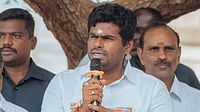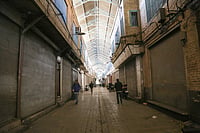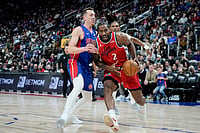On May 4, three women from Erup Kangpopki village in Manipur ran from their burning homes. Their harrowing story was only pieced together more than 70 days later, with new details emerging day by day. But one tale runs common – they were stripped naked, paraded by a mob of hundreds of men and then allegedly gang-raped. This was not an isolated incident in the strife-torn northeastern state as was casually accepted by Manipur’s Chief Minister N Biren Singh, who defended the delay in action against the perpetrators by claiming that “hundreds” of such incidents happened on the ground.
It took a violent and gory video of a naked woman being assaulted by a group of men in broad daylight for the Prime Minister to break his silence on the strife in Manipur. But, the PM also directed his outrage towards how the opposition fails to address violent crimes against women in its own states. He condemned the Manipur incident as “shameful” but then also used the familiar narrative of referring to the women as “daughters”. “What happened to the ‘daughters’ of Manipur can never be forgiven,” he said.
Stripped, raped and murdered – similar narratives
In times of conflict, women’s bodies continue to be used as battlefields. In the case of the May 4 incident in Manipur, it became a case of retribution – one community’s revenge against the other was achieved by dishonouring the women of the 'other' community.
Back in July 2004, a 32-year-old woman Manorama Thangjam was taken from her home in Manipur by members of the 17th Assam Rifles. The next morning, her body was found mutilated, with 16 bullet wounds, lying next to a paddy field. She had been stripped, allegedly raped, and murdered. Assam Rifles claimed that she had been picked up as she was part of the People's Liberation Army (PLA), a militant outfit in Manipur. They alleged that she had been a PLA militant since 1995 and was an IED expert. The incident which occurred in times of pre-social media, also escaped the national and local media for a long time. Until a graphic visual surfaced.
In a form of protest, 12 middle-aged women or 'Imas' (which translates as 'mothers’ in Meitei) stripped off their clothes at the gate of Imphal's Kangla Fort cantonment, where Assam Rifles was then stationed. They held up placards stating "Indian Army, Rape Us" “Indian Army Take Our Flesh”. The footage from the protests of the 12 women, in their bare form, representing their angst towards rape by the armed forces, and shouting “Rape us!” while beating their chests proved to be a flashpoint in Manipur. But it was only in 2014, when a retired judge, Chungkham Upendra Singh, who was assigned to look into the woman's death, concluded that the woman had been brutally raped and murdered.
Almost 20 years later, not much has changed for women in the violence-hit state. Days after the first video came to light, it was reported that two other Kuki-Zo women from Kangpokpi’s Khopibung village were locked up in a room in Imphal and sexually assaulted by at least six men, according to the FIR registered by their families. They were found dead in the room hours later. Few days ago, a security personnel of the Border Security Force (BSF) was caught on camera groping a woman inside a grocery store. These are only the cases which have been reported so far. With recurring internet shutdowns and restricted access to information, many crimes against women go unreported, or rather unnoticed in the case of Manipur. The sexual harassment incident of May 4, was reported to the police the same month. A Zero FIR was filed on May 18. But the Manipur police made its first arrest on July 20.
Women issues consumed by politics
Even as the women in Manipur have been at the receiving end of structural violence since pre-independence, the language of rights in the northeastern state has been predominantly masculine – with the government largely focussing on the ‘security issue’ of the state in terms of protecting the nation from external forces or internal issues, rather than in terms of micro lives, writes Shreema Ningombam, Assistant Professor in a college in Manipur.
In such a scenario, the military becomes the central pillar of the state and society, as manifested in the AFSPA and women end up suffering from ‘double patriarchy’ here—first they suffer under archaic patriarchal customs and laws, and second, they suffer from the patriarchal form of nationalism engulfing Manipur and the Indian state, she further writes.
The survivors of the incident are being termed ‘daughters’ – who are under the control of the patriarch, which in this case is the state. The same ‘paternalistic’ sentiment was visible in the statements made by several politicians since then. Bihar BJP spokesperson Vinod Sharma resigned from the party saying the incident ‘defamed India’. CM Biren Singh announced statewide protests because the viral video ‘tarnished the state’s image’ – which seems as if violation of women’s bodies needs to be equated with the violation of a nation’s image, for it to receive national importance.
More than 80 days after the May 4 incident, the Manipur police has arrested eight accused in the case so far. But the question remains: Why does it take a graphic visual of women being assaulted for the state to act? And does the delayed action suffice as justice?


























